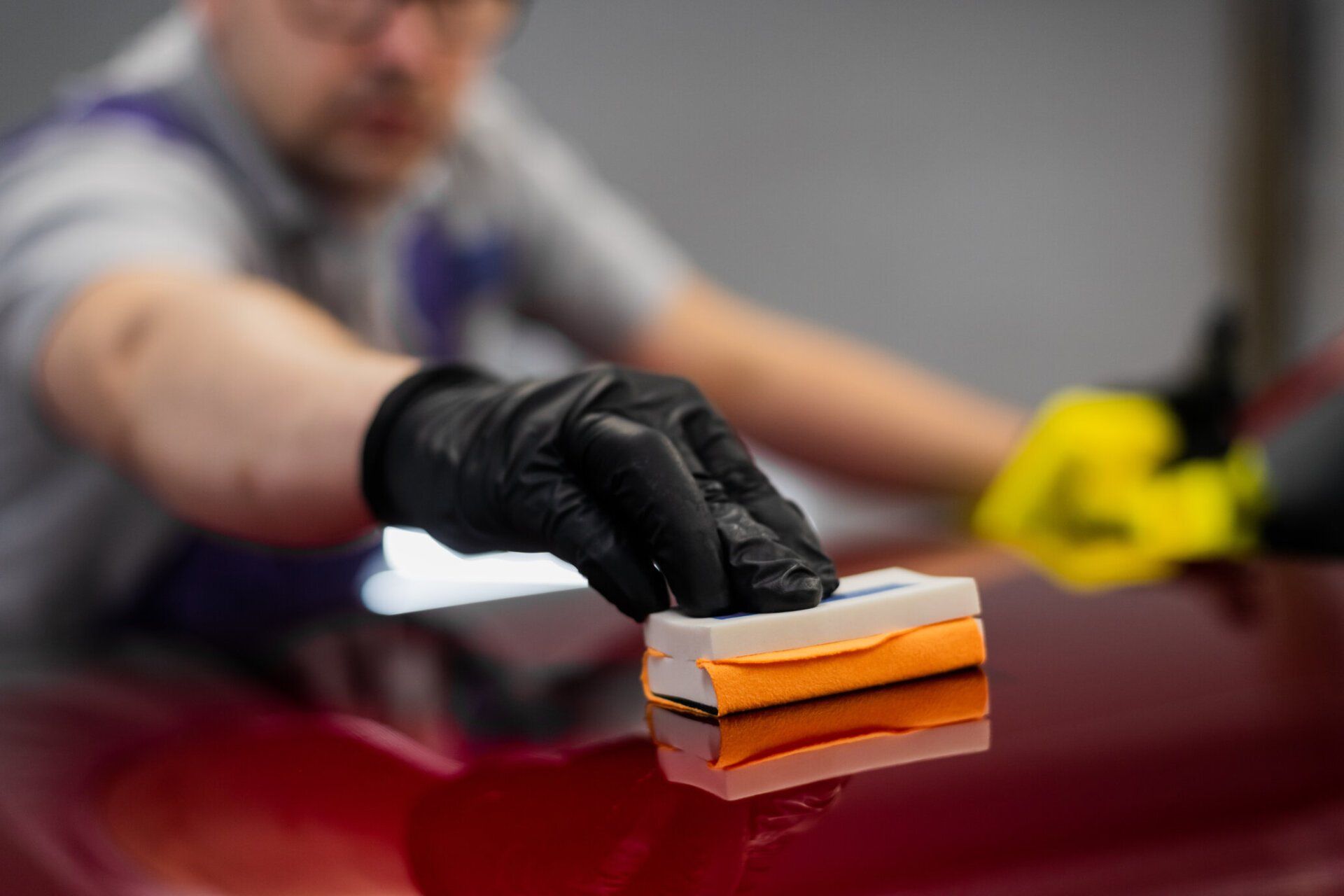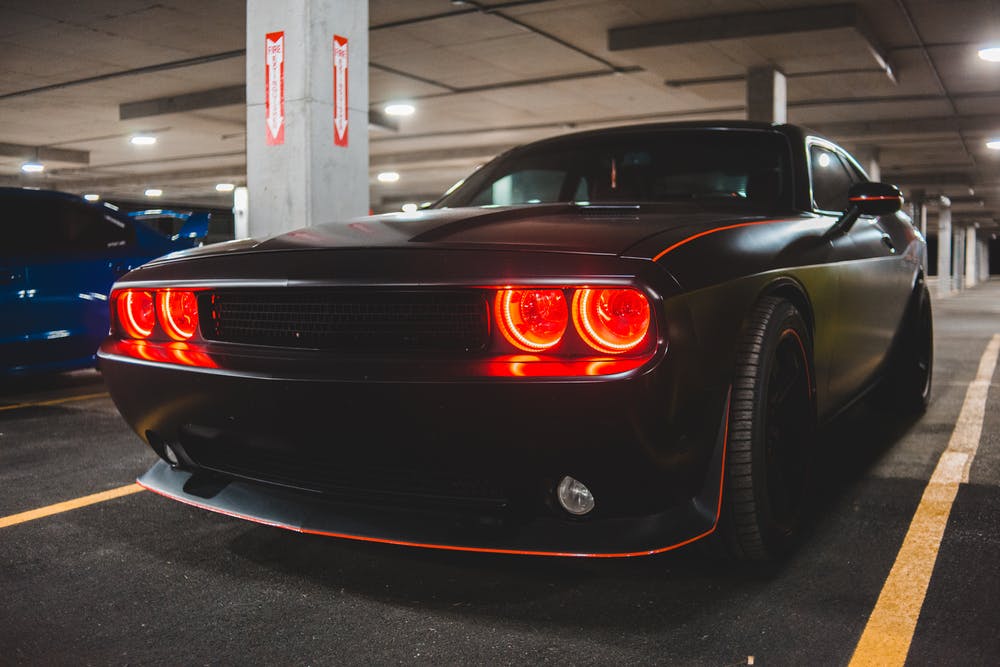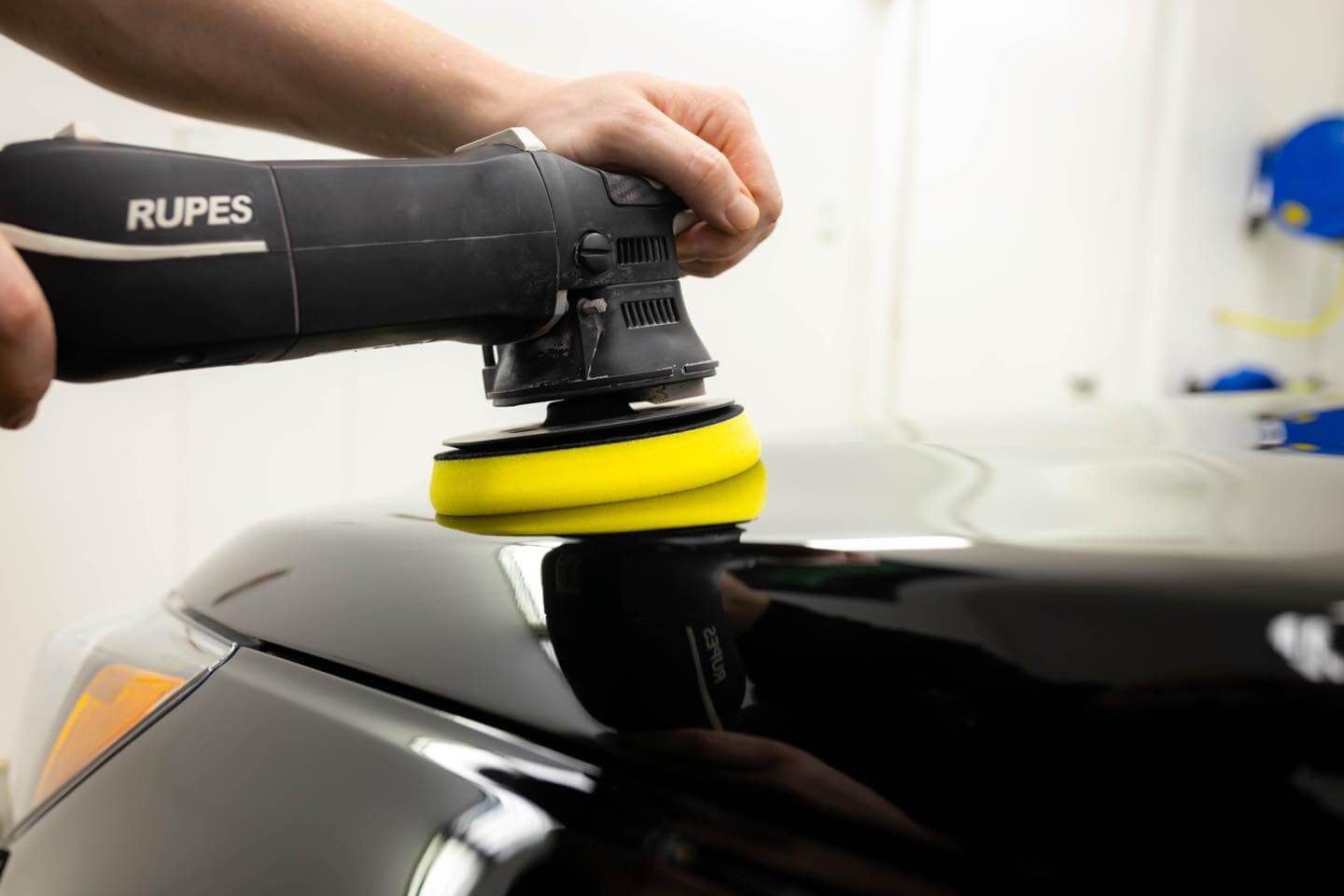Ceramic coatings that fail prematurely often share one common factor: improper surface preparation. The difference between a coating that lasts two years versus one that performs for five years often comes down to one critical factor: ceramic coating prep.
Surface preparation works similarly to house painting principles. Fresh paint applied over peeling, dirty siding will inevitably fail because it lacks proper adhesion to the underlying surface. The same principle applies to paint correction before coating. Vehicle paint surfaces require absolute perfection before ceramic coating application. When done properly, the molecular bond between the coating and paint creates a relationship that can withstand years of punishment from UV rays, road salt, and harsh weather conditions.
Ceramic coating adhesion depends entirely on surface preparation, though many car owners remain unaware of this critical relationship. A coating applied over swirl marks and contamination will only be as strong as the weakest point underneath. Starting with a perfectly corrected paint surface creates the foundation for a coating that will protect the vehicle investment for years to come.
The Science Behind Ceramic Coating Adhesion
Ceramic coating adhesion works at the molecular level, explaining why proper surface prep matters so much. When ceramic coatings cure, they form covalent bonds with the clear coat molecules. These bonds are incredibly strong, but they require direct contact with clean, smooth surfaces to form properly.
The ceramic coating molecules need to penetrate into the microscopic pores of clear coat. Scratches and swirl marks create irregular surfaces that prevent even coating distribution. More importantly, these imperfections trap air pockets that prevent proper molecular bonding. Without this direct contact, the coating becomes a surface-level application instead of a true chemical bond.
Surface contamination creates an even bigger problem. Iron particles, tar, tree sap, and other contaminants act as barriers between the coating and paint. The coating might look good initially, but it's actually bonded to the contamination, not the clear coat. When that contamination eventually breaks down or wears away, it takes the coating with it.
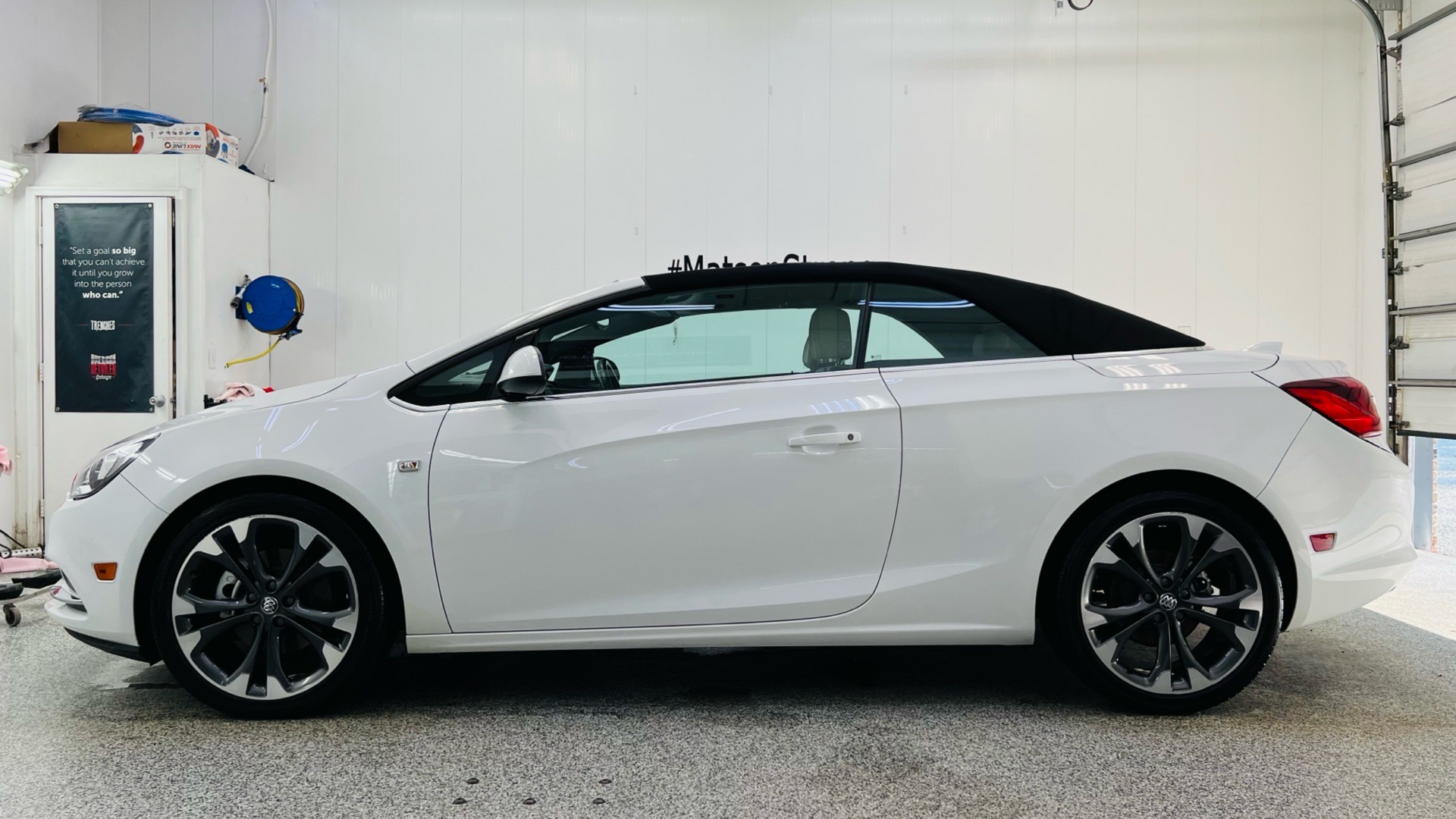
Paint Defects That Compromise Coating Performance
Paint correction before coating addresses several specific defects that directly impact coating longevity and performance. Each type of imperfection creates unique challenges for ceramic coating adhesion.
Swirl marks are the most common issue encountered. These microscopic scratches create valleys and peaks on paint surfaces. When ceramic coating flows into these valleys, it can't maintain consistent thickness across the surface. The thin spots wear through faster, while the thick spots in valleys create an uneven appearance.
Deeper scratches present even bigger challenges. The coating will bridge across shallow scratches, creating weak spots that flex and crack under temperature changes. These stress points become failure zones where coating starts to peel or chip away.
Oxidation creates a chalky layer on a clear coat that prevents proper bonding. Water spots etch into clear coats, creating tiny craters that trap contaminants and prevent smooth coating application. These etched areas also create stress concentration points that can cause coating failure over time.
Surface Analysis: When Paint Correction Is Essential
Not every vehicle needs extensive paint correction before coating, but most require some level of surface preparation. Understanding when correction is necessary helps make informed decisions about coating investment.
Paint thickness measurements help determine correction options. Vehicles with thin clear coat require gentler correction methods to preserve coating thickness. Conversely, vehicles with thick, healthy clear coat can handle more aggressive correction for optimal results.
Light reflection patterns reveal surface imperfections that affect coating performance. Swirl marks show up as spider web patterns under direct lighting, while deeper scratches appear as distinct lines. Haze and oxidation create diffused reflection that reduces paint clarity.
Surface contamination testing involves running hands over paint after washing. Rough or bumpy textures indicate bonded contaminants that require removal. Professional paint depth gauges measure clear coat thickness across different panels to determine safe correction limits.
Professional Paint Correction Techniques
Paint correction before coating requires systematic approaches that address each type of defect while preserving clear coat thickness. Professional techniques maximize correction results while maintaining long-term paint health.
Compound cutting removes deeper scratches and heavy oxidation using aggressive abrasives. This process cuts through damaged clear coats to reveal fresh material underneath. Proper technique involves overlapping passes with consistent pressure and speed.
Polish finishing eliminates fine scratches and swirl marks left by compounding. Multiple polishing stages with progressively finer abrasives create mirror-like surfaces that enhance coating appearance and adhesion.
Machine selection affects correction results significantly. Rotary polishers provide maximum cutting power for heavy correction work. Dual-action machines offer safer operation for lighter correction and finishing work.
The Impact of Contamination on Coating Longevity
Surface contamination represents one of the biggest threats to ceramic coating adhesion and long-term performance. Different types of contaminants affect coatings in specific ways that proper preparation can prevent.
Iron contamination embeds metal particles into paint that continue corroding even after coating application. These particles create expansion points that crack coating layers and allow moisture penetration. Proper iron removal eliminates this ongoing damage.
Organic contamination includes tree sap, bug residue, and tar that bonds chemically with clear coat. These materials continue breaking down under coating layers, creating weak spots and discoloration. Water-based contamination leaves mineral deposits that etch into clear coat surfaces.
Environmental fallout includes everything from industrial pollution to road salt that bonds with paint surfaces. This contamination layer prevents direct coating contact with clear coat and must be completely removed for optimal adhesion.
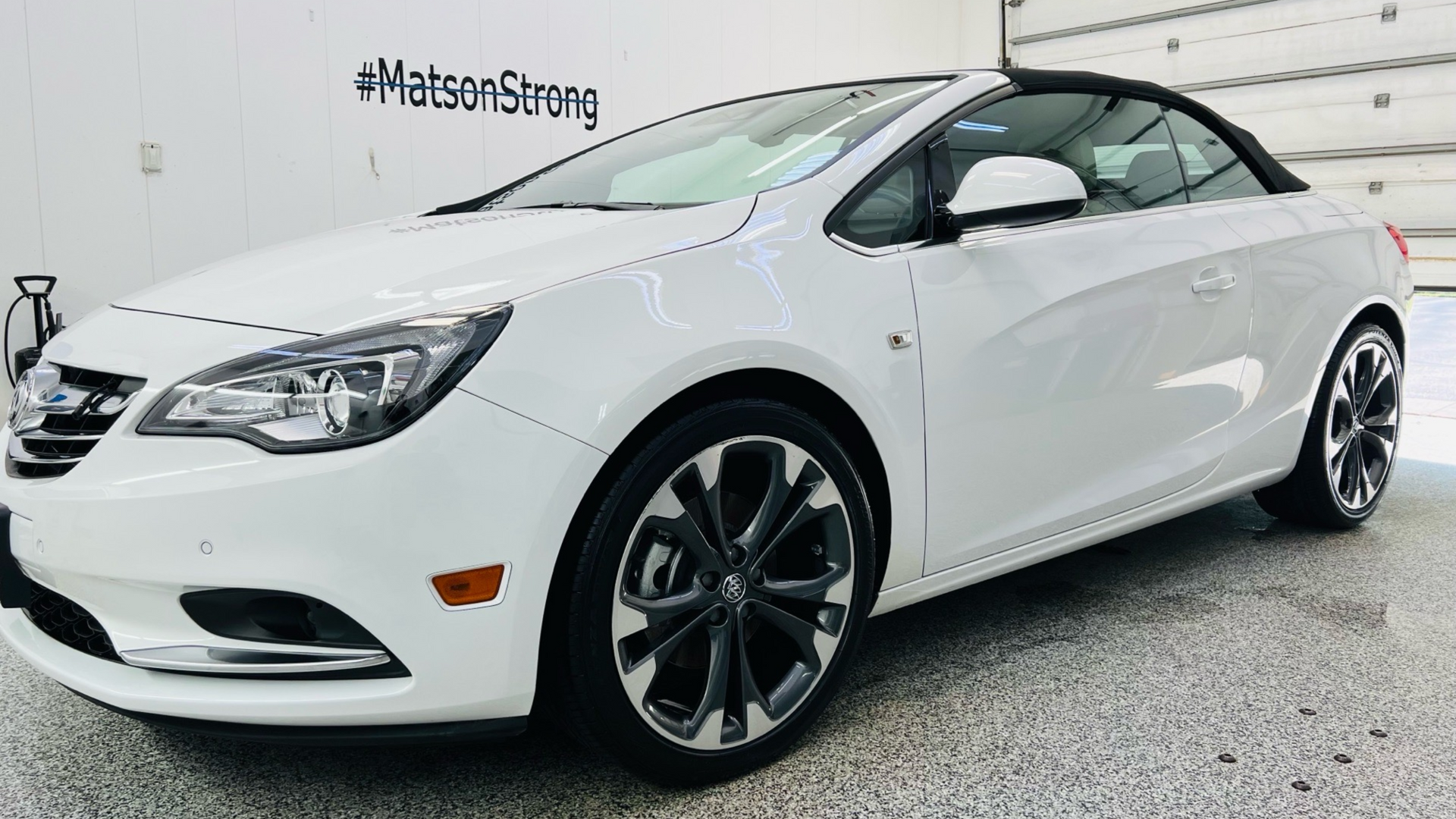
Quality Control: Testing Coating Adhesion
Professional ceramic coating prep includes testing procedures that verify proper surface preparation before coating application. These quality control measures prevent coating failures and ensure optimal performance.
Water contact angle testing measures surface energy and coating readiness. Properly prepared surfaces show specific water behavior patterns that indicate optimal bonding conditions. Surfaces that aren't ready show different contact angles that suggest additional preparation needs.
Paint thickness verification ensures adequate clear coat remains after correction work. Thickness gauges measure coating depth at multiple points to verify safe correction limits weren't exceeded during preparation.
Frequently Asked Questions
What happens if ceramic coating is applied without paint correction?
Ceramic coatings applied over scratches and contamination will only last as long as the weakest point underneath. The coating bonds to surface defects rather than actual paint, leading to premature failure, uneven appearance, and reduced protective properties. Coating breakdown typically occurs within 12-18 months instead of the 3-5 years expected from properly prepared surfaces.
How long does proper paint correction take before ceramic coating application?
Complete paint correction before coating typically takes 8-16 hours depending on paint condition and vehicle size. This includes decontamination, correction work, and final preparation. While this seems extensive, proper preparation extends coating life by 2-3 times, making it a worthwhile investment for serious car enthusiasts.
Can paint correction damage my vehicle's clear coat?
Professional paint correction before coating actually preserves clear coat health by removing damaged material and creating optimal bonding surfaces. When performed correctly with proper techniques and equipment, correction removes only the minimal amount necessary to eliminate defects. Most vehicles have sufficient clear coat thickness to handle multiple correction cycles throughout their lifetime.
What's the difference between paint correction and simple polishing?
Paint correction systematically removes defects using measured abrasive processes, while simple polishing typically just fills in scratches temporarily. Ceramic coating prep requires true correction that eliminates defects rather than hiding them. Filled scratches will eventually show through coating applications, while properly corrected surfaces provide permanent defect removal.
How can I tell if my paint needs correction before coating?
Visual inspection under direct lighting reveals swirl marks, scratches, and oxidation that affect ceramic coating adhesion. Running hands over clean paint helps identify contamination - rough textures indicate bonded contaminants that require removal. Professional evaluation using paint thickness gauges and surface analysis provides definitive assessment of correction needs and safe limits for specific vehicles.
Get the Gloss That Lasts—Pair Paint Correction with Ceramic Coating
Proper ceramic coating prep through professional paint correction creates the foundation for coatings that protect and enhance vehicles for years to come. The molecular bonding between ceramic coatings and perfectly prepared paint surfaces provides durability that simply can't be achieved through shortcuts or surface-level preparation.
Understanding the science behind ceramic coating adhesion helps car owners make informed decisions about vehicle protection. When investing in proper paint correction before coating, the payment covers more than better appearance - it's an investment in long-term protection that maintains vehicle value and reduces maintenance requirements.
At Five Star Automotive Detailing, systematic approaches to surface preparation ensure optimal bonding conditions that deliver the longevity and protection vehicles deserve. Whether protecting a daily driver or a weekend classic, proper preparation makes the difference between good and exceptional results.
Ready to experience the difference that professional ceramic coating prep makes? Contact our team to discuss specific vehicle needs and learn how proven preparation techniques can maximize ceramic coating investment. Visit our ceramic coating services page to discover why Minnesota car enthusiasts trust us with their most valued vehicles.


